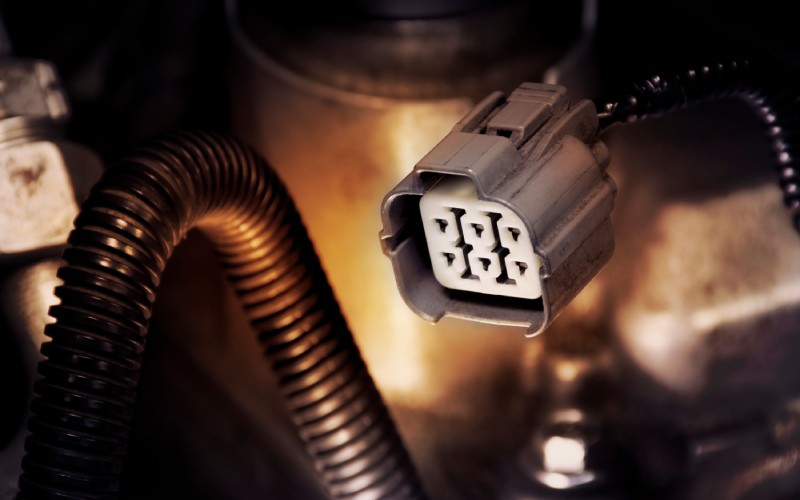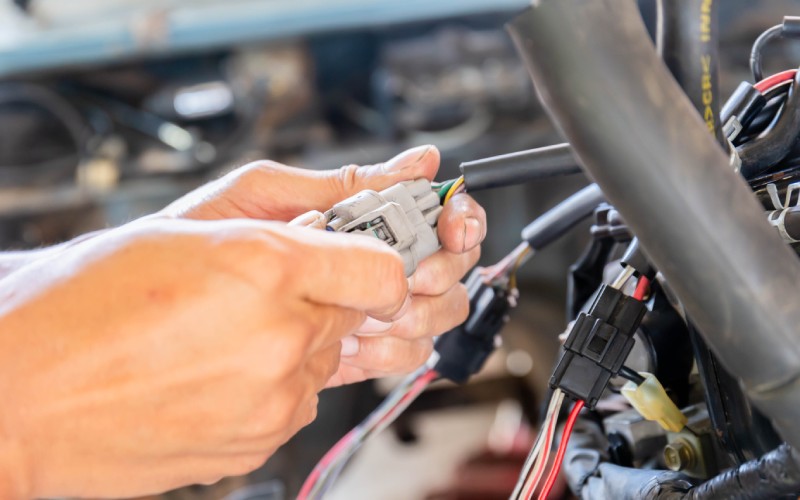Design Principles and Considerations for 6-Cavity Connectors
Design Principles and Considerations for 6-Cavity Connectors

The smallest components in engineering can have a significant impact when it comes to keeping things running smoothly and effectively. That’s one reason why choosing the right electrical connectors is important when it comes to designing automotive engines, boats, construction equipment, and other powerful engines that we use every day.
Connector Experts is here today to explain some of the design principles and considerations for 6-cavity connectors, why they’re so important, how we can optimize their performance, and how to protect them from some of the more common issues in the field.
Understanding the Importance of 6-Cavity Connectors
It’s impossible to overstate the importance and relevancy of electrical connectors in automotive applications. They serve as critical junction points that seamlessly transmit electrical signals and power throughout a vehicle.
From safety systems to infotainment units and engine components, these connectors are integral to a vehicle's functionality. Automotive engineers must prioritize the design of these connectors to ensure they meet stringent reliability and performance standards.
Material Selection for Durability
Choosing the right materials for 6-cavity connectors is vital to achieving durability and reliability in demanding automotive environments. These connectors must withstand extreme temperatures, vibrations, and exposure to chemicals without degrading in performance. Engineers often select high-performance thermoplastics for their strength, thermal stability, and resistance to corrosion.
Polyamide and polyester are popular options because of their excellent mechanical properties and ability to maintain integrity under stress. Additionally, engineers and manufacturers frequently pick metallic components, such as copper or gold plating, for contact points to ensure optimal conductivity while resisting wear and corrosion. The careful selection of these materials is crucial, as it directly impacts the life span and reliability of the connectors, which in turn affects the overall functionality of the vehicle systems they support.

Ensuring Connector Reliability
Understandably, you want to focus on reliability when designing connectors for automotive applications. To ensure unwavering performance, engineers must focus on thorough testing and rigorous quality control measures. One of the first steps in enhancing reliability involves subjecting connectors to environmental and mechanical stress tests, simulating conditions such as temperature fluctuations, vibrations, and exposure to chemicals or moisture.
These tests help identify potential failure points and establish performance thresholds. Advanced design techniques, like finite element analysis (FEA), can predict how the connector will behave under various conditions, allowing for optimizations before the manufacturing phase.
Electrical Performance Optimization
Optimizing electrical performance is a key focus when designing 6-cavity connectors for automotive applications. The goal is to ensure efficient signal transmission with minimal loss, which can significantly impact the overall functionality and reliability of a vehicle's electrical systems. Engineers must consider several factors, such as minimizing resistance and impedance while maximizing signal integrity.
One common approach is to enhance the contact interface design, which ensures that connectors are secure and less likely to degrade over time. Implementing low-resistance materials, such as copper alloys with appropriate surface treatments, can improve conductivity. Additionally, the design should account for electromagnetic interference (EMI) shielding to prevent disruption from external electronic systems.
Thermal Management Considerations
When identifying the design principles and considerations for 6-cavity connectors, engineers often look carefully at thermal management. Excessive heat can degrade materials and compromise connector integrity.
Engineers must account for the thermal characteristics of materials and design connectors that can effectively dissipate heat. Including features like heat sinks or employing advanced cooling methods can help maintain optimal connector temperatures.
Incorporating Safety Features
Safety is a top priority in automotive engineering, and all electrical connectors must contribute to this goal. Designing connectors with fail-safe mechanisms, such as redundant contact points or built-in fuses, can prevent catastrophic failures. Ensuring connectors can handle overload conditions without damage and incorporating safety locks to avoid accidental disconnections are essential considerations.
Meeting Industry Standards
All engineers, designers, and manufacturers must work to ensure that their designs adhere to all industry standards for automotive applications or other standards in their fields. Compliance with established norms ensures that connectors meet safety, performance, and quality benchmarks crucial for vehicle reliability. Experts must consider these specifications during the design process to guarantee functionality with other vehicle components and systems.
Conforming to industry standards also streamlines the approval process, reduces development time, and helps reduce risks associated with noncompliance. By meticulously following these standards, automotive engineers can create connectors that not only function effectively within complex vehicle architectures but also foster trust and confidence among manufacturers and consumers alike.
Ergonomics and User-Friendly Design
While functionality is important, the ease of use and installation of 6-cavity connectors should not be overlooked. Engineers must design connectors that are user-friendly, allowing for quick and hassle-free assembly or disassembly. Features like color-coded housings, intuitive locking mechanisms, and clear labeling can enhance the user experience and reduce the likelihood of installation errors.
Environmental and Sustainability Considerations
Sustainability is an increasingly important factor in automotive design. Engineers must consider the environmental impact of electrical connectors, from material sourcing to end-of-life disposal. Using recyclable materials and designing connectors for easy disassembly and recycling can contribute to a more sustainable automotive industry.
Cost Effectiveness Without Compromise
Achieving cost effectiveness in connector design without compromising quality is a challenging yet essential endeavor in the automotive industry. Engineers strategically balance economic considerations with performance requirements to deliver connectors that are both affordable and reliable.
This approach begins with the selection of cost-efficient materials that retain essential properties for durability and conductivity. Employing advanced manufacturing techniques, such as automated assembly and precision molding, not only lowers production costs but also enhances the consistency of connector quality.
By optimizing the production process and leveraging innovative design strategies, automotive engineers can create connectors that meet budgetary constraints without sacrificing the robustness required to ensure vehicle safety and functionality.
Future Trends in Connector Design
The field of automotive engineering is continuously evolving, and so are connector technologies. Future trends in 6-cavity connector design may include advancements in smart connectors with embedded sensors for real-time monitoring and diagnostics. The integration of wireless communication capabilities and the use of lightweight, high-strength materials will likely shape the future landscape of automotive connectors.
Connector Experts is here to help you gain valuable insights and expertise into the new and advanced technology that comes with electrical connectors. We encourage you to explore the innovative possibilities within the realm of 6-wire pigtail connectors. Find connectors for your automotive application needs and discover the true marvels and capabilities of electrical connector technology.


You must login to post comments.